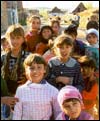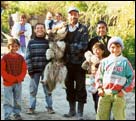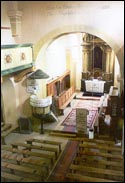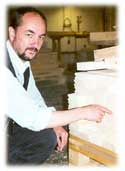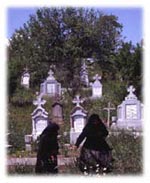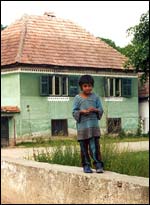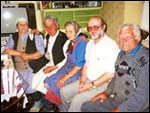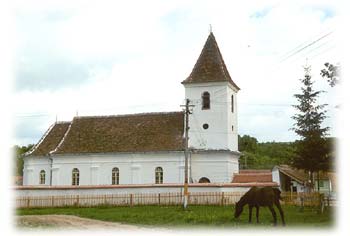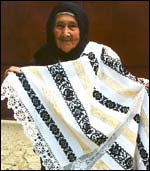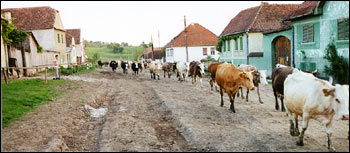 |
 |
The kids are as respectful as you could ever hope for. The children all greeted us politely and expressed appreciation for the little that we were doing to help them along. Classroom demeanor was a model of discipline. Our next stop was in the very poor minority area on the edge of Vurpar. We were greeted by scores of excited and laughing children, and proud, respectful adults.
The gypsy minority makes up a growing percentage of the village and is beginning to exercise political muscle through the ballot box. Finally, we got to the dispensary where we delivered medical supplies to the clinic. One of two village medics, the mayor, Mihail Lienerth, Simon Dragan and his brother gathered to open the boxes. There is need for most medicine and basic medical supplies.
Much of what
was supplied from Fort Wayne was equipment. Stethoscopes, blood
pressure monitors, diabetes testing equipment etc.
The sanctuary of the old German Saxon church sees services once monthly for the 40 to 60 Sasi (the Romanian word for Saxons). (Kirche) The Romanians have a habit of displaying the date of the latest renovation on the outside of their buildings, so edifices which may date back two hundred years or more may proudly display the year 1978 on a wall.
We also visited the newly established sauna factory of Helmut Michaelis who employs seven or eight people from Vurpar.
And, we were treated to a girl's choir singing traditional folk songs during the Sunday service at the church. And watched as older women tended the graves of their loved ones.
Down the road from Vurpar is Tichindeal where a gypsy boy contemplates passing strangers…
Here is Simon with his aunt, "Matusa," on the left and her friends.
Tichindeal is as old as Vurpar. The church has seen a thousand weddings and so many burials. The church and school has a new coat of paint thanks to Mr. Albert, a newcomer to town.
And the cows do come home. You've heard the saying, "I was out till the cows came home." Here that means about 7pm each summer night. They herd ambles down from pasture, utters filled with milk, aching for relief. Each cow has a well-worn path and, being simple creatures, they follow the course. So, if your car is parked a bit into the street, as was ours, the passing herd might knock off a rear-view mirror, might smash the side in, or more.
Continue
to Read... |


